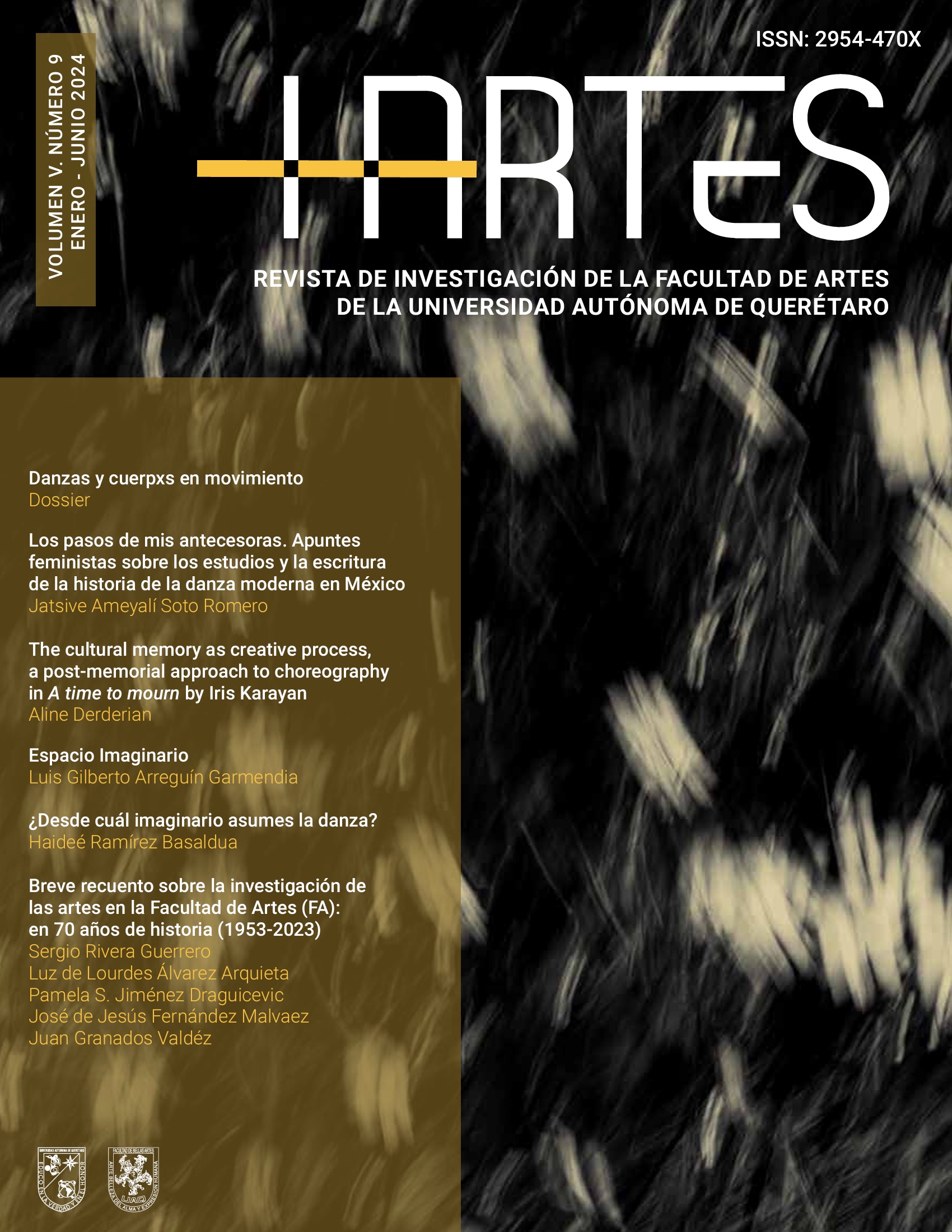Resumen
El trabajo del bailarín, la recreación estética del espectador y la creación del coreógrafo comparten la misma importancia: la comprensión exitosa y mutua es la finalización del círculo del proceso de composición. El autor reflexiona sobre su obra Espacio Imaginario desde la perspectiva del coreógrafo a través de la exploración y el análisis de su génesis e inspiración y su título.
Referencias
Bejart, M. (2006). Cartas a un joven bailarín. España: Editorial Libros el Zorzal.
Cage, J. (2009). “Ryoanji: Solos for Oboe, Flute, Contrabass, Voice, Trombone with Percussion or Orchestral Obbligato (1983-85)”. PAJ: A Journal of Performance and Art, 31(3), pp. 58-64. Recuperado de https://monoskop.org/images/c/c4/Cage_John_2009_Ryoanji_Solos_for_Oboe_Flute_Contrabass_Voice_Trombone_with_Percussion_or_Orchestral_Obbligato_1983-85.pdf
Cunningham, M. (1992). “Dance in Space and Time”. En R. Kostelanitz. (Ed), Dance in Space and Time (pp. 37-39). Chicago: Da Capo Press.
Smith-Autard, J. (2004). Dance Composition: A Practical Guide to Creative Success in Dance Making. Great Britain: A&C Black Publishers.

Esta obra está bajo una licencia internacional Creative Commons Atribución-NoComercial-CompartirIgual 4.0.
Derechos de autor 2024 HArtes


